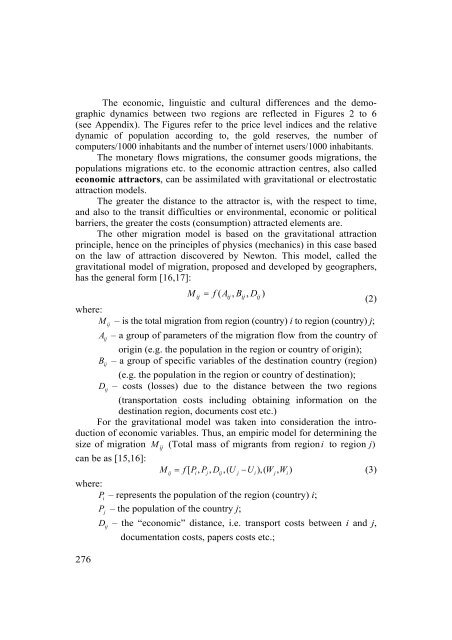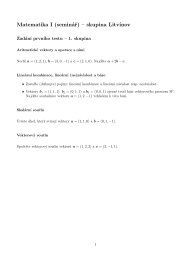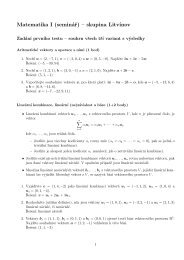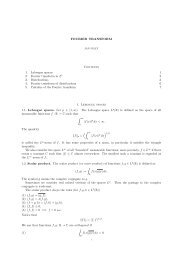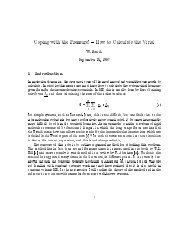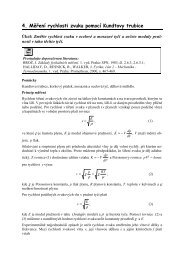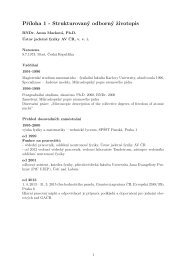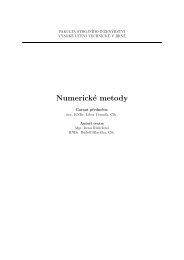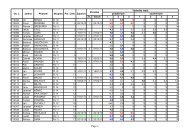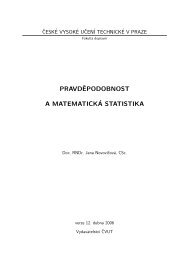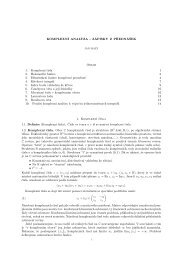- Page 2 and 3: HYPERIONINTERNATIONAL JOURNALOF ECO
- Page 4 and 5: Hyperion International Journal of E
- Page 6 and 7: ECONOPHYSICS Section233
- Page 8 and 9: INDUSTRIAL PROBLEMS OF TECHNICALELE
- Page 10 and 11: In (1): the sought for vector funct
- Page 12 and 13: Where:Further, the system (4) is re
- Page 14 and 15: 2Since ˆ∂ is the particular case
- Page 16 and 17: The second condition in (24) means
- Page 18 and 19: A STUDY OF THE DISTRIBUTION OF WEAL
- Page 20 and 21: trading. We also consider the money
- Page 22 and 23: fraction, p, increases, the shape o
- Page 24 and 25: Market with fluctuations in pIn the
- Page 26 and 27: Both a variation of 0.1 and 0.2 hav
- Page 28: Models with untradeable savingsIt c
- Page 31 and 32: Figure 11 shows that adding a savin
- Page 33 and 34: agents are representatives, for exa
- Page 35 and 36: such a market where there is only o
- Page 37 and 38: Figure 18. A snapshot of financial
- Page 39 and 40: Shown in Figure 19 is a diagram sho
- Page 41 and 42: have been adjusted to 100 to make v
- Page 43 and 44: In the future more complicated asse
- Page 45 and 46: AN ECONOPHYSICS MODELFOR THE MIGRAT
- Page 47: As well, linked to the first two ca
- Page 51 and 52: dable [18]. If for the gravity mode
- Page 53 and 54: As in the cases discussed in the pr
- Page 55 and 56: APPENDIXFigure 2. Gold Reserves (mi
- Page 57 and 58: 284Figure 6. Relative dynamics of p
- Page 59 and 60: (i) extreme sensitivity to initial
- Page 61 and 62: This model given by equation (9) is
- Page 63 and 64: ConclusionThis paper suggests concl
- Page 65 and 66: ELASTIC COLLISIONS OF HARD SPHERESV
- Page 67 and 68: governed by strict physical laws gi
- Page 69 and 70: Figure 1 depicts a scattering diagr
- Page 71 and 72: collisions correspond to wealth-exc
- Page 73 and 74: This randomly sharing of the “bet
- Page 75 and 76: conservation implies that with incr
- Page 77 and 78: REFERENCES[1] J. Angle, The Inequal
- Page 79 and 80: market activity and graphing the pr
- Page 81 and 82: Figure 2. Fractal property in forei
- Page 83 and 84: 3. B-tree database indexesIn order
- Page 85 and 86: REFERENCES[1] Hideki Takayasu, Misa
- Page 87 and 88: The book has both a fundamental and
- Page 89 and 90: NEW ECONOMY Section317
- Page 91 and 92: THE QUALITY FUNCTION DEPLOYMENT (QF
- Page 93 and 94: f) the product delivery and selling
- Page 95 and 96: In these conditions, the integrated
- Page 97 and 98: Goal L i S 2 S 1 K i w i Q iG1 10 6
- Page 99 and 100:
4. The Goal-Oriented Framework for
- Page 101 and 102:
EUROPEAN UNION ENERGY POLICYAND GOO
- Page 103 and 104:
- The attempt to create a single ma
- Page 105 and 106:
enewable energy sources from 17.8%
- Page 107 and 108:
of the education system, inadequate
- Page 109 and 110:
vital supplies dangerously low. The
- Page 111 and 112:
FINANCIAL AND ECONOMIC CRISES:ROMAN
- Page 113 and 114:
12000111501000080006000400090247356
- Page 115 and 116:
421.70-2-4-6-8-10-7.10-4.1-4.9-6.7-
- Page 117 and 118:
there was a sharp reduction of thei
- Page 119 and 120:
will not invest and consume. A spec
- Page 121 and 122:
of a fundamental „moral deficit
- Page 123 and 124:
In his ’The 8th Habit: From Effec
- Page 125 and 126:
steered by personal material intere
- Page 127 and 128:
[4] Stiglitz, J., In free fall, Ame
- Page 129 and 130:
examples are proof of this: not inc
- Page 131 and 132:
appropriate, especially now in full
- Page 133 and 134:
market, or the demography challenge
- Page 135 and 136:
From the point of view of Dror Y. 7
- Page 137 and 138:
Territorial units 9 are defined in
- Page 139 and 140:
3. Social: A socially sustainable s
- Page 141 and 142:
REFERENCES[1] James Roberson (2005)
- Page 143 and 144:
Migration causes were diverse, rang
- Page 145 and 146:
Migration Flux by Region in 2005 3R
- Page 147 and 148:
Currently, the provisions of the Tr
- Page 149 and 150:
Free movement of persons, in partic
- Page 151 and 152:
In general, aliens are more vulnera
- Page 153 and 154:
[15] Gabriela Moldoveanu Tinteanu,
- Page 155 and 156:
In order to come to the finality of
- Page 157 and 158:
The analysis of fiscal pressure ove
- Page 159 and 160:
agricultural takeoff. In 1988 the s
- Page 161 and 162:
amortization of permanent capital,
- Page 163 and 164:
[3] A. Duca, Miraculous Tax Triangl
- Page 165 and 166:
“Storm Worm Rages Through Interne
- Page 167 and 168:
of 500 packets per second is enough
- Page 169 and 170:
4. Botnet PatternsBotnets, a major
- Page 171 and 172:
- Email Addresses: 2-4 $/MB- Compro
- Page 173 and 174:
7. Tackling DDoSThere are three asp
- Page 175 and 176:
[15] Symantec Enterprise Security,
- Page 177 and 178:
2. Intercultural NegotiationPerhaps
- Page 179 and 180:
There are certain features of the n
- Page 181 and 182:
can respond on an issue as soon as
- Page 183 and 184:
CONCEPTUAL APPROACHES ABOUTINTERNAT
- Page 185 and 186:
as apparent sacrifices that pursue
- Page 187 and 188:
negotiations, the power balance ten
- Page 189 and 190:
venture value judgment, because the
- Page 191 and 192:
REFERENCES[1] Barelier A., Dupoin J
- Page 193 and 194:
1. Formal and legal authorization c
- Page 195 and 196:
their activities and when confronte
- Page 197 and 198:
3.1. Identification of problems and
- Page 199 and 200:
It should be emphasized that too gr
- Page 201 and 202:
3.2. Formulating the strategy for a
- Page 203 and 204:
accomplishes public tasks included
- Page 205:
PPP comprising a public entity and


